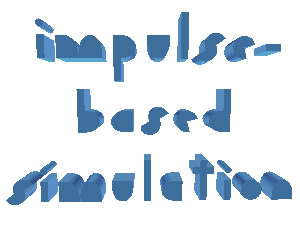
Primary Goals
Before jumping into the task of parallelizing Impulse, we considered
the reasons for attempting such a project and what goals we would like
to achieve as a result.
The long term goal for the serial version of Impulse is to produce
physically accurate, real time 3D simulation of reasonably complex
systems.
Our goals of attempting to parallelize Impulse can be best summed up
in the following two statements.
Improve performance of complex systems with very large numbers of
rigid bodies.
System with very large numbers of objects will benefit from a parallel
implementation. However, as discussed in the results section, such large systems would not
run on the CM5 due to memory constraints and we were forced to test
our system only on smaller systems where we don't expect such large
improvements.
Approach real-time simulation for VR and user interaction in dynamical
systems
Clearly we would like to approach real-time simulation of system so
that users can actually interact with the simulator. Without a object
to processors mapping system as described in the future section, it is difficult to achieve this
type of parallel performance. However, with the modifications
described there, we hope to achieve ever closer real-time performance,
especially on large systems.
It's important that during our pursuit of these goals that we maintain
the initial design criteria for this Impulse as a physically accurate
and computational efficiency simulation tool.
Eric Paulos /
paulos@robotics.eecs.berkeley.edu /
10 May 1995

